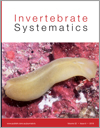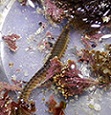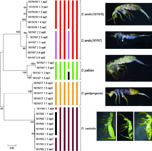IS18024Cryptic speciation in a biodiversity hotspot: multilocus molecular data reveal new velvet worm species from Western Australia (Onychophora : Peripatopsidae : Kumbadjena)

The diversity of Western Australian Onychophora has yet to be fully uncovered and is burdened by the conserved morphology and cryptic habits of the phylum. Here we describe three new species in the genus Kumbadjena with the first molecular investigation of the Onychophora in Western Australia. The ranges of these new species suggest that they are short range endemics. The prevalence of endemics in this region has implications for the conservation of biodiversity.














